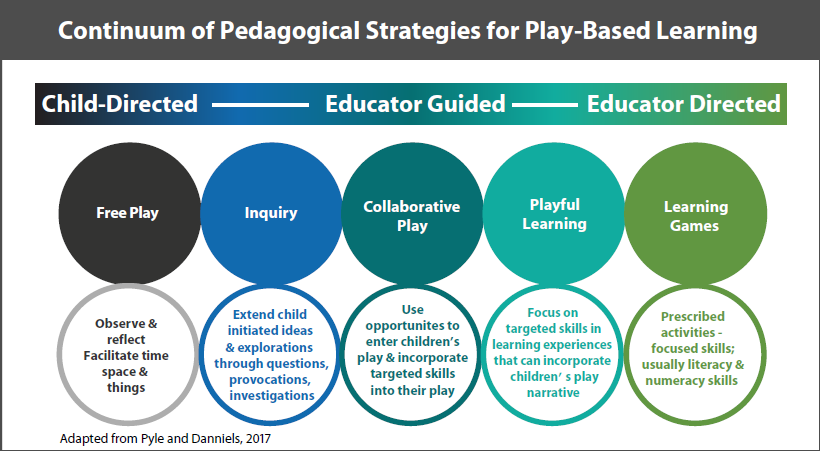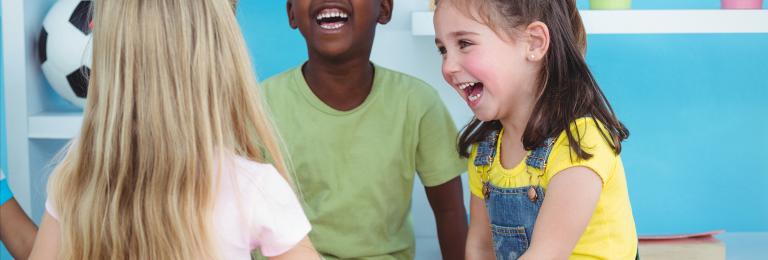Play-Based Learning Continuum
Through play, children build bridges between ideas and connect feelings, facts and gain new understandings about how the world works through continual, reciprocal interactions with others. Children’s play may be a catalyst to introduce specific learning activities as a bridge whereby educators and children learn together, or as opportunities for children to learn from their own play or with others. Play combined with wise amounts of intentional instruction creates important learning moments.
The continuum of play-based learning allows educators to recognize and value a variety of play experiences. Free play is recognized as valuable to gather information about children’s abilities and proclivities for learning. Direct instruction is effective for specific discrete skills. Guided learning while children play is most effective for a suite of learning goals including metacognition and self-regulation (Alfieri, Brooks, Aldrich & Tenenbaum, 2011)

Alongside the continuum of play, is a parallel continuum that defines the role of educators from non-obtrusive observation to direct instruction. Play provides a multitude of daily opportunities for intentional teaching when educators can make concrete connections between the children’s play and a specific skill or concept. Sometimes, educators will introduce something new and directly instruct children in how to use a tool or introduce a specific academic concept or skill that can then be connected to their play. In other situations, educators will support the inclusion of children with diverse learning needs by interpreting nonverbal cues or making space in a play scheme for another child. Educators can negotiate the balance of child-directed and educator-guided play depending on the group of children and families.
Play-based learning can be described along a continuum from free play, to inquiry, collaborative play, playful learning and learning games. The continuum of play-based learning incorporates the types of play alongside strategies to maximize learning opportunities.
Play that is directed by children allows them to take the lead and to engage and collaborate with each other. They take the lead and engage with the world around them. Play that is extended by conversations and educator resources can extend children’s learning. Play directed by educators with a focus on “just-in-time” instruction give children the cultural tools they need to deepen and widen their play and learning. Children and educators become a community of learners.
The continuum of play-based learning is an alternative to simply alternating direct academic instruction with free-play periods. Instead, educators can intentionally design play-based learning experiences from across the continuum with varying degrees of child direction and educator guidance. The type of program and who the children and educators are will influence how the continuum is used.
To learn more, see https://www2.gov.bc.ca/assets/gov/education/early-learning/teach/earlylearning/play-today-handbook.pdf
Source: The Play Today Handbook
